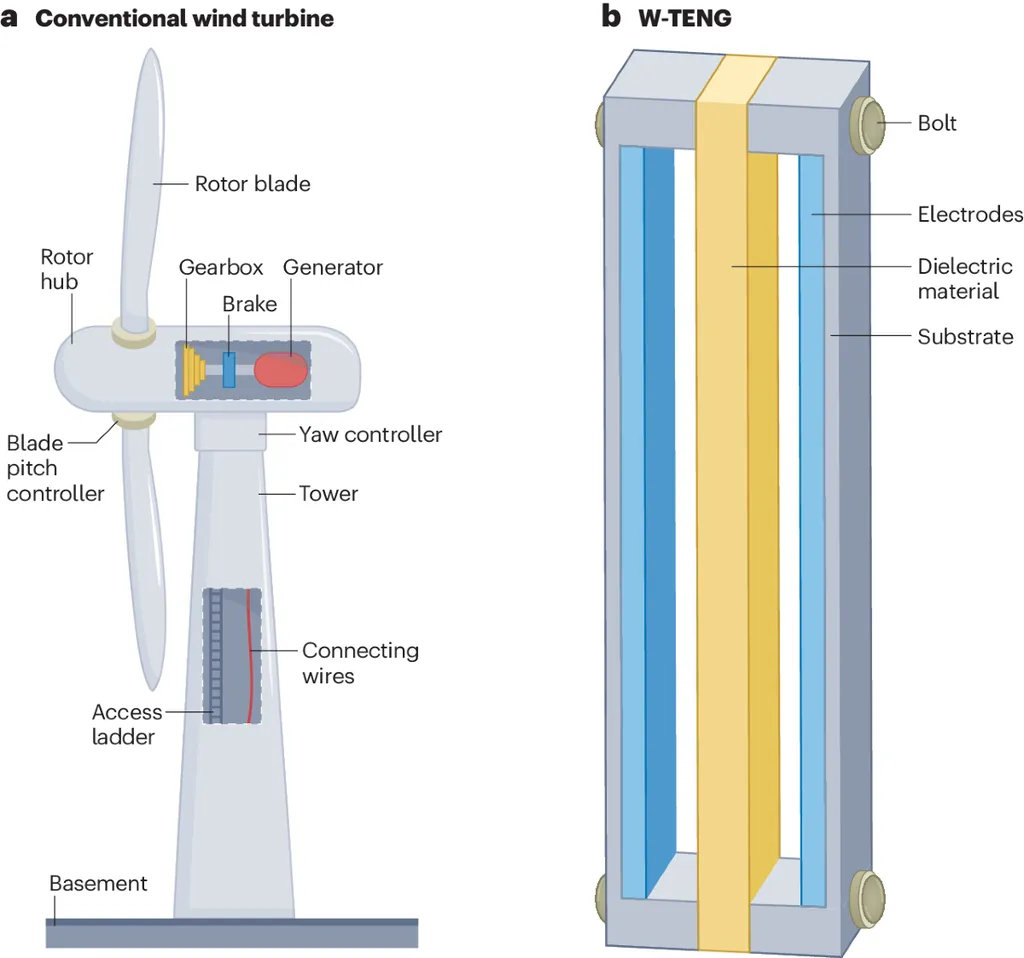In the quest for sustainable energy solutions, researchers have long sought to harness the power of the wind more efficiently. A recent breakthrough from Guangxi University in China offers a promising advancement in this arena. Led by Jiaqing Niu from the School of Mechanical Engineering, a team of innovators has developed a novel hybrid generator that not only captures wind energy with remarkable efficiency but also monitors wind direction and speed with precision. This development could have significant implications for the energy sector, particularly in smart agriculture and environmental management.
The team’s creation, a multi-layered triboelectric–electromagnetic hybrid generator (TEHG), combines the strengths of two distinct technologies: triboelectric nanogenerators (TENGs) and electromagnetic generators (EMGs). The TEHG comprises three functional layers, each serving a unique purpose. The first layer is a soft-contact rotary triboelectric nanogenerator (S-TEHG), designed for low-wind-speed energy harvesting. The second layer is an electromagnetic generator (EMG), which boosts the energy output. The third layer features eight flow-induced vibration triboelectric nanogenerators (F-TENGs) arranged in a circular array, enabling multi-directional wind vector monitoring.
The TEHG’s design allows it to achieve broadband energy harvesting, maintaining a consistent electrical output even after three hours of continuous operation. “This stability is crucial for practical applications,” Niu explains. “It ensures that the generator can provide a reliable power supply in various environmental conditions.”
One of the most impressive aspects of the TEHG is its power supply capability. The EMG can charge a 1 mF capacitor to 1.5 V 738 times faster than conventional methods using a boost converter. Additionally, the TEHG can power a thermohygrometer for 103 seconds with just 17.5 seconds of operation, demonstrating an average output power of 1.87 W and a power density of 11.2 W/m³.
The F-TENGs in the TEHG can accurately determine wind direction with a detection error of less than 4.5%. This feature is particularly valuable for environmental monitoring and smart agriculture, where precise wind vector data can inform decision-making processes.
The TEHG’s innovative structure and multifunctional capabilities offer a durable and efficient solution for sustainable energy and intelligent environmental sensing. “This technology has the potential to revolutionize the way we harness wind energy,” Niu says. “By combining the strengths of both EMG and TENG technologies, we can create more reliable and versatile energy solutions.”
The research, published in the journal ‘Micromachines’ (translated to English as ‘Micro Machines’), represents a significant step forward in the field of wind energy harvesting. As the world continues to seek sustainable energy solutions, innovations like the TEHG could play a crucial role in shaping the future of the energy sector.
The commercial impacts of this research are substantial. The TEHG’s ability to provide a reliable power supply and precise environmental monitoring could make it an attractive option for industries ranging from renewable energy to smart agriculture. As the technology continues to develop, it could become a key player in the global transition to sustainable energy sources.
In the broader context, this research highlights the potential of hybrid technologies in addressing complex energy challenges. By leveraging the strengths of multiple technologies, researchers can create more efficient and versatile solutions that meet the demands of a rapidly changing world. As the energy sector continues to evolve, innovations like the TEHG will be essential in driving progress and shaping the future of sustainable energy.

